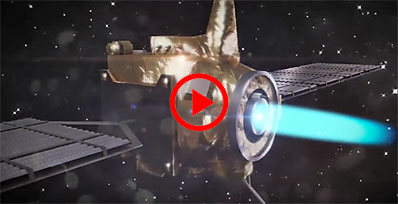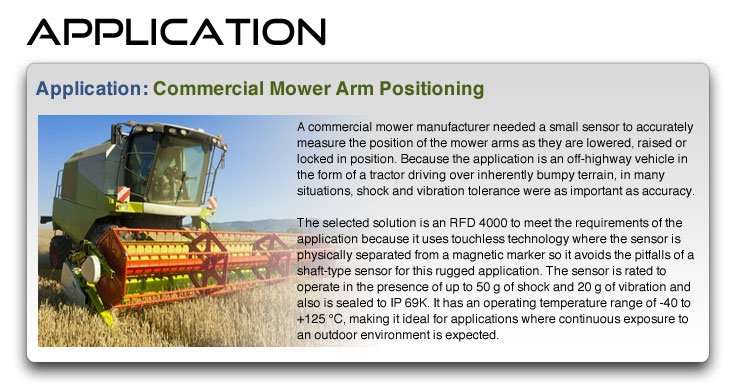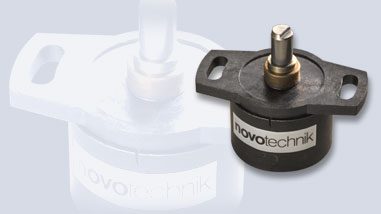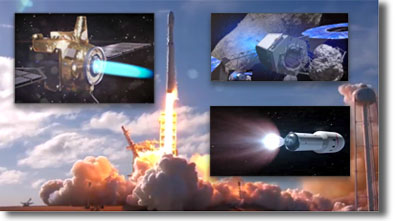
|
Featured video: Ion Thrusters To view newsletter in your browser click here. |
 |
| See the Ion Thruster video |
|
|
While ion propulsion engines have been developed and tested in past years, a high power ion engine is coming ‘online’. NASA Evolutionary Xenon Thruster (NEXT) ion propulsion technology has been developed for use in deep-space and interstellar missions. According to NASA, their “NEXT ion propulsion system consists of a gridded ion thruster, Power Processing Unit, thruster gimbal, a xenon propellant feed system, and a control interface captured either in a dedicated unit or distributed between the ion propulsion system and the spacecraft.” Furthermore, they specify that either a solar cell powered or nuclear electric heat source would be used for powering the ion drive along with the xenon propellant. Based on the information on NASA’s website regarding past ion engines and future goals, an engine producing 30 to 50 kW of power is anticipated. NASA’s website reveals, “modern ion thrusters are capable of propelling a spacecraft up to 90,000 meters per second- about 200,000 mph. To put that into perspective, the space shuttle is capable of a top speed of around 18,000 mph. The tradeoff for this high top speed is low thrust (or low acceleration).” But it doesn’t ‘burn through’ fuel like a rocket, and according to NASA’s site, “modern ion thrusters can deliver up to 0.5 Newtons of thrust. To compensate for low thrust, the ion thruster must be operated for a long time for the spacecraft to reach its top speed.” NEXT-C ion drive is for commercial use and the equipment is scheduled to be delivered for flight testing in early 2019. |
| Difference Between Absolute and Incremental Position Measurement Devices | |
|
Definitions
An absolute position sensor outputs the actual position being measured by the sensor within its measurement range. This type of sensor needs no reference information to determine position. An An incremental-type position sensor outputs a change in position with respect to a reference point. It counts cycles and determines position with respect to a reference as opposed to the start or end of a fixed range. This is referred to as incremental position change. Often these are incremental encoders. Practical Technical Differences Incremental sensors do not retain their position if power is lost, they must reacquire reference information. Until a reference is acquired, there is uncertainty of position information when the incremental-type sensor is powering up or as a power loss is starting to occur and insufficient power is available. When power is restored, only a relative position is known, not an absolute position. Some incremental-type sensors have batteries to try to overcome this deficiency of missing position information during a power loss. While it is better, batteries eventually lose power and can provide less than the needed amount of power for memory circuits to retain information even before they are at zero output. So if the battery is low or out of power, you’re back to an information loss scenario. This could be a serious situation for reliability, quality and even safety depending on the application.
|
Absolute sensors can provide information as fast as real time with no latency right from being powered up (potentiometric sensor types). Incremental-type sensors need up to one cycle to determine the reference information and possibly perform a calibration process to get it. Incremental sensors that use optical technology have, in the past, had an advantage of no mechanical wear over potentiometer (track and wiper) technology found on absolute position sensors that use potentiometric technology. This advantage is erased though as newer non-contacting and touchless absolute position sensor technology is available. Optical sensors can be more sensitive to disturbances in the application’s environment such as vibration, shock as well as dust or liquid ingress. Practical Cost Differences Incremental encoders are typically used in applications where it is possible to go to a reference position upon starting up, such as a lathe or milling machine. In the past, incremental-type position sensors were lower cost than absolute sensors. More recently, this cost advantage has faded as absolute sensors have approached the cost points of incremental, but retained and even improved their advantages of reliability, accuracy and response time. |
|
|

|
|

|
RSM2800 Series Non-contacting magnetic encoder series counts up to 16 turns while measuring angular position to 5,760° with up to 16-bit resolution and detects position even in unpowered state. It’s linearity is to ±0.3% and is sealed against ingress of water and dust to IP 67. Analog and digital output versions are available. |
|
|
|
If you have a question about position sensors for your specific application, Novotechnik engineers would be glad to speak with you. Contact us at Email Novotechnik [email protected] or call 800-667-7492. Please email suggestions for technical subjects you would like to suggest for this newsletter to this link: Newsletter Editor [email protected] |
